Indoor flowers are not only about the perfect interior and visual beauty. It is also about clean air in the apartment. As you know, indoor plants are able to purify indoor air and destroy bacteria, which, under certain conditions, begin to multiply in it. Today we will talk about best detoxifying indoor plants, taking care of the health of their owner and all household members together, and also decorating the home space. It is noteworthy that any of the members of our list is ready to grow and develop even in the kitchen that is, in the room that is the most aggressive of all the rooms in the apartment. Well, let’s get acquainted!
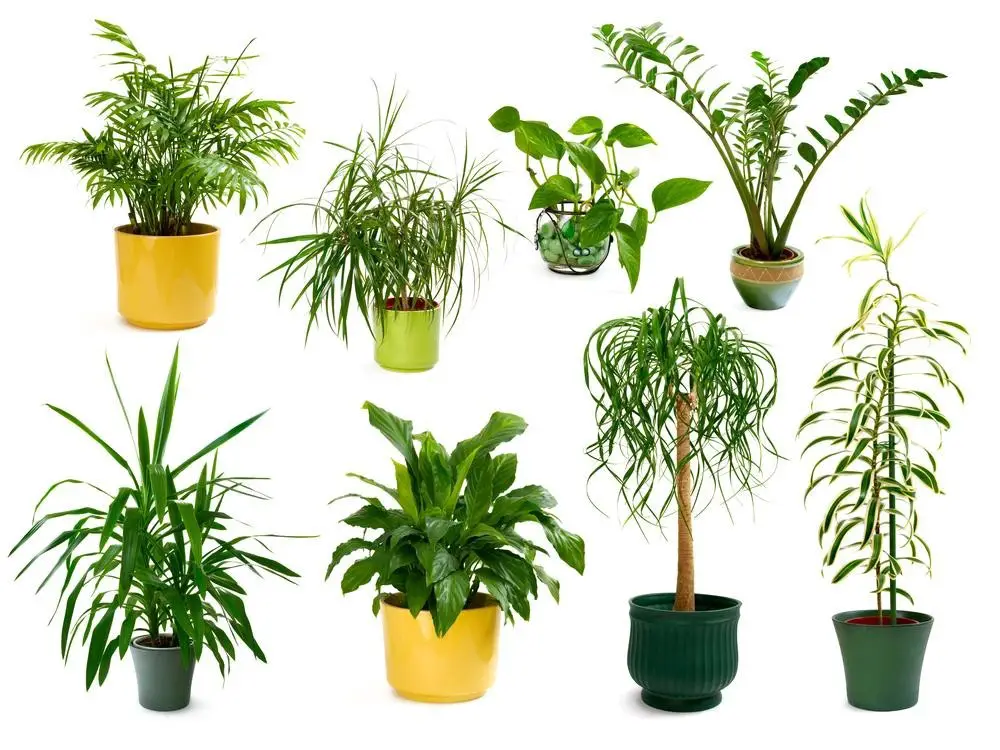
List of best detoxifying indoor plants
Hoya meaty
Kalanchoe
Saintpaulia
Geranium
Phalaenopsis Orchid
Eucharis
Hibiscus chinese
Begonia
Cactus
Pilea Kadier
Aspidistra
Fat woman
Chlorophytum
Aloe vera
Sansevieria
Philodendron
Zamioculcas
Ivy
Epipremnum
Nolina
best detoxifying indoor plants
Lets discuss in detail about each plant listed above
Hoya meaty
The second name for this indoor flower is wax ivy. Hoya twists on supports or hangs from a flowerpot, being a 100% ampelous plant. If you care for her competently and provide the flower with the most comfortable conditions, it will definitely bloom. During this period, the hoya looks especially unique, as it fully justifies its popular nickname: the hoya flowers look as if someone skillfully sculpted them out of candle wax.

Wax ivy leaves have long been used to treat boils that have jumped out on the body (in simple terms, teal). In order for the plant to curl, it is enough to pull the fishing line for it in an upright position: the ivy will seize it on its own and begin to climb up.During the flowering period, the fleshy hoya releases nectar, which spreads a magnificent aroma throughout the house. The flower serves not only as a purifier but also as a fragrance at home. True, if one of the household members is allergic, you should not risk planting such a plant in the house: its smell is too strong.
Check also best indoor plants for dust allergy
Kalanchoe
The houseplant Kalanchoe has been known to each of us since childhood. Remember, on the basis of Kalanchoe juice, grandmothers prepared us cough syrups, medicines for the common cold and some kind of infusion that instantly relieves the symptoms of colds and flu. Kalanchoe was applied to broken knees, cuts on the skin and other wounds. And for good reason. This indoor flower does an excellent job not only with cleansing the air of bacteria and viruses, it is no less cleverly fighting for human health, healing the body and exerting antibacterial and a number of other important effects on the body.
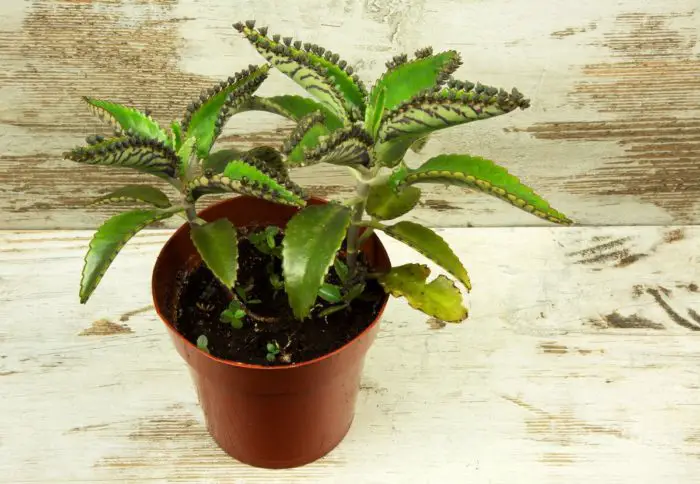
In order for the Kalanchoe to grow easily and with pleasure, it is necessary to protect it from the aggression of direct sunlight by scattering light with tulle or roller shutters, and also to provide the flower with moderate watering. Experts recommend planting Kalanchoe in pots and keeping it in every room of a house or apartment. This is a very useful plant, therefore, the number of Kalanchoe in the house can be increased from time to time.
Saintpaulia
To begin with, saintpaulia and violet are completely different things. Everything that concerns the first one does not at all apply to the second one. Saintpaulia is loved not only by doctors but also by bioenergetics. The former claim that she does an excellent job of antibacterial work indoors, while the latter are confident that Saintpaulia improves the weather in the house. They also say that families with many Saintpaulias in their apartments rarely get sick. And this, as you now understand, is not a myth.
Saintpaulia reacts extremely badly to drafts. But this does not mean that the room in which there is a pot with a plant does not need to be ventilated. Still how it should be! But before opening the window wide open, Saintpaulia needs to be temporarily moved to another room.
Geranium
And again the confusion with the names: the geranium or the crane is really one of the representatives of the Geraniev family; exactly the same as pelargonium – the flower that we used to call geranium. Indoor pelargonium (which most of us take for geranium) got into our top, which contains plants that are the best at cleaning the air.

The beauty of pelargonium is that it contains essential oil in its stems and leaves. Standing out from different parts of the houseplant, this oil aggressively fights microorganisms that are present in the airspace of the room, and does not leave them a single chance.
see also Beneficial Plants For Home.
Geranium oil is a traditional ingredient in perfumes, cosmetics and pharmaceutical products.
Phalaenopsis Orchid
The Phalaenopsis orchid is one of the varieties of indoor orchids, called beginner orchids. The thing is that phalaenopsis does not require close attention from the grower, it actually grows by itself, loves wet rooms (therefore, it feels great in bathrooms, especially if they have a window). It is believed that the optimal location for phalaenopsis in the house is the kitchen. Firstly, this is one of the wettest places in the apartment. Secondly, there are most of all harmful substances in the air, with which the orchid for beginners does an excellent job. Thirdly, phalaenopsis also removes unpleasant odors, neutralizing and dispersing them.

Phalaenopsis recognizes harmful substances in the air and eliminates them. For example, those who grow such an orchid in an apartment may not be afraid of the negative effects of toluene and xylene.
Eucharis
The Amazon lily (and this is how this plant is popularly called) visually resembles a daffodil. But the daffodil, as you know, does not feel very comfortable in the apartment, unlike the eucharis, for which an eastern or western window sill and diffused sunlight are enough. Eucharis does an excellent job of purifying the air. Doctors even recommend transferring it for a while to the room of a person who is sick. But it’s better not to keep a flower in the bedroom all the time. Although the scent of the Amazonian lily is very pleasant, it negatively affects the quality of sleep.
Hibiscus Chinese
About Hibiscus Chinese in the house, you may have never heard of, but that’s about the Chinese rose heard accurately. There was a time when such a flower was in every office. There were myths, they say, it is strictly forbidden to keep him in the apartment. It was rumored that Chinese hibiscus is bad for family relationships. But time has shown that all this is nothing more than stupid stereotypes, in which there is not a grain of truth.
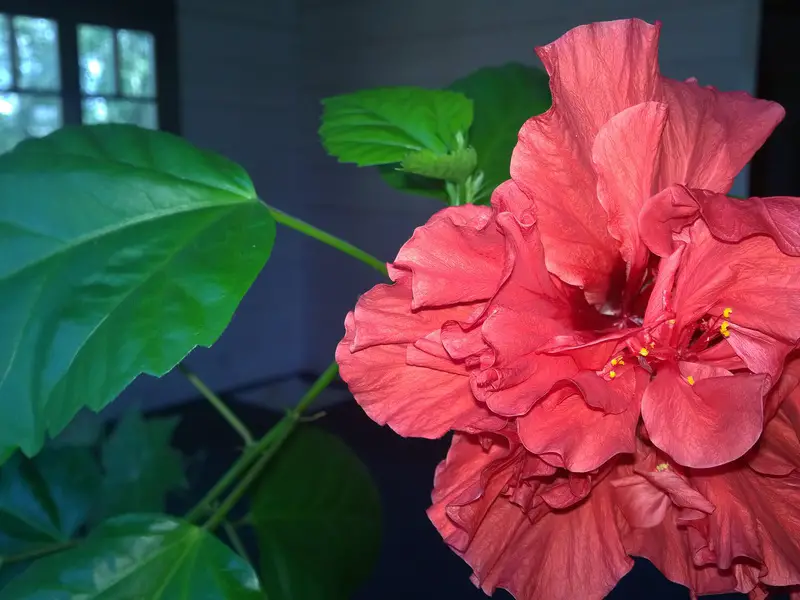
In reality, everything is exactly the opposite: the Chinese rose (which, by the way, has absolutely nothing to do with ordinary roses) stimulates the surrounding plants to actively develop. It cleans the air from bacteria, saturates it with its light aroma and eliminates microorganisms that can cause various diseases – both plants and humans.
Do you have a question in your mind How To Care For Houseplants While On Vacation?
Begonia
Ornamental Begonia is a lamp for quartzing among plants. Its foliage and stems contain phytoncides, which, released into the air, trap bacteria and destroy them. Begonia is considered a poisonous plant for both humans and animals. Therefore, we recommend keeping the flower away from children and pets. It is advisable to work with begonia (water, fertilize, spray) only with gloves. But do not let this scare you: the benefits of a flower in the house are much more than the risks associated with it.
Cactus
In our childhood, they said absolutely the following about cacti plants: we need to keep pots with thorns on the desktop near the computer since cacti tend to absorb radiation. And it is true! These plants, which are absolutely unpretentious in care, absorb electromagnetic radiation, preventing it from having a negative impact on human health. In addition, these unusual plants tend to ionize the air. The ionization function is probably present in your hairdryer, with which you dry your hair, or in the curling iron, with which you straighten it. Now you know that similar property is given to the cactus by nature. By the way, we do not recommend rearranging cacti from place to place: this representative of the flora is very jealous of such changes and can resist new circumstances of life.
The longer the needles of a cactus, the stronger its positive effect on human health and the more intensively this plant cleans the air of harmful microorganisms.
pilea cadierei
Pilea is a relative of nettle. These plants belong to the same family. But the former is popular in indoor floriculture, while the latter is not. Among the various forms and varieties of pilea, it is the Kadje pilea that is considered the most demanded and popular. Not only does the pilea famously purify the air in the room, it also decorates it with itself, or rather, with its foliage, on which a silvery pattern is applied by nature itself.
So that the pattern never fades and always remains as bright as it was originally, we recommend that you define the Kadier saw on the northern or eastern windowsill.
Check also Best soil to use for houseplants.
Aspidistra
The popular name for the flower of Aspidistra is “cast iron plant”. The aspidistra received such a metallic nickname due to its unpretentiousness. She does not care what the temperature is in the room, she does not care about the humidity level and without watering the aspidistra can hold out for quite a long time. This flower is not afraid of drafts and sudden temperature changes. But it does an excellent job of cleansing the air from bacteria and moisturizes it on its own
Fat woman
A jade plant, a money tree, or a jade plant are one and the same thing. This indoor flower is popularly called differently. Followers of the practice of Feng Shui are sure that the fatter and denser the leaves of the fat woman, the more actively she attracts cash flows into the house. Biologists cannot say anything about this, but they know for sure that the fat woman does an excellent job of purifying the air. And it also has a unique appearance, thanks to which it is so ardently loved by Ukrainian flower growers.
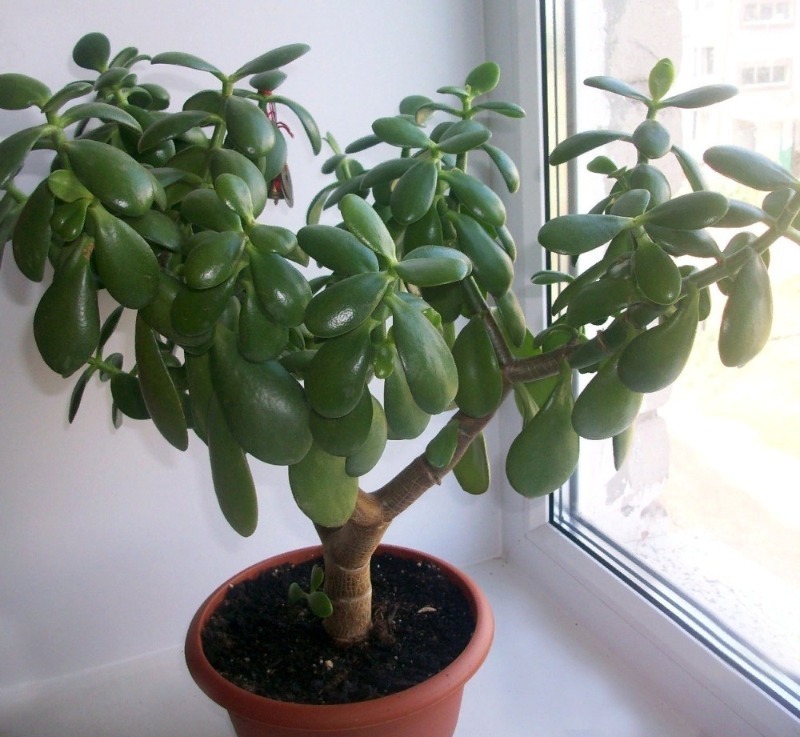
Crassula is the official name for the fat woman. The plant, thanks to its fleshy foliage, well moisturizes the air space in the room and helps cleanse the air from pathogenic flora.
Chlorophytum
Chlorophytum crested is considered the most active species of this houseplant in terms of the intensity of cleansing the air space in the room. If you smoke a lot in the room, if aerosols are used in it, if it is a kitchen in which food is cooked on a gas stove, all this is a reason to put a pot of crested chlorophytum in the room. Or with any other variety of this houseplant.
In a room with an area of two square meters, chlorophytum destroys 70% of the pathogenic flora within 24 hours.
Want to know about Best Mulch For Indoor Plants.
Aloe vera
It is the most famous succulent plant on the planet. It seems that he was known to domestic flower growers even when the term “succulent” was not yet in their language arsenal. The succulent plant Aloe Vera is known primarily as a medicinal representative of the flora. Its glandular juice is used to treat and prevent a wide variety of diseases. On its basis, home care and professional cosmetics are made.
Aloe is a skillful formaldehyde neutralizer. The plant instantly recognizes benzene and eliminates it from the air. It actually destroys. All Aloe Vera asks for in return is diffused sunlight and moderate watering.
Sansevieria
Indoor Sansevieria is also called differently: someone – a pike’s tail, someone – a mother-in-law’s tongue as if hinting at the talkativeness of his wife’s mother. The beauty of sansevieria is not only in its unique appearance but also in the fact that the substances secreted by this plant neutralize toxins. In particular, those that throw substandard finishing materials into the air. For example, linoleum.
Philodendron
There are a lot of varieties of philodendrons suitable for indoor floriculture. They differ in height, spreading of the bush, color and shape of the leaves. But whichever variety of Philodendron you choose, any of them will go on the warpath with harmful impurities present in the air in your kitchen. Philodendron loves partial shade. It is advisable to keep it next to a humidifier. But if this is not possible, just wipe its foliage every seven days with a damp piece of natural cloth.
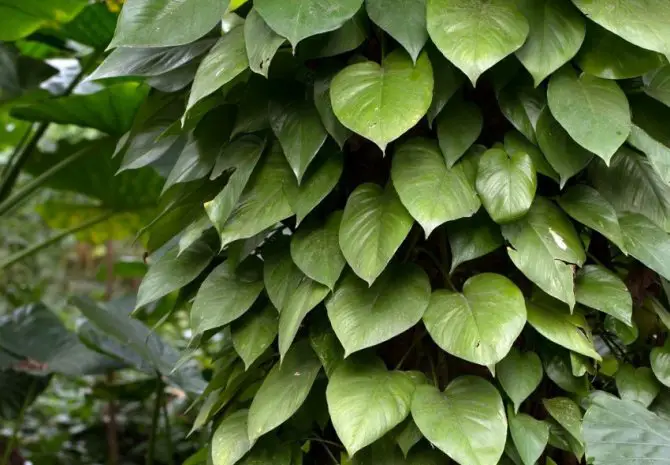
The most spectacular in the interior are the golden-black and graceful philodendrons. The bipinnate variety of the flower also looks great in the apartment.
Take a look at Plants for very small pots.
Zamioculcas
Succulent Zamik (and this is how the growers affectionately call this flower) was born in Africa. Therefore, if, during indoor cultivation, you forget to water it, or if the air in the room becomes excessively dry, Zamiokulkas will not pay attention to this. Zamik refers to plants that perfectly purify the air. In a room where several large castles grow, it is noticeably easier to breathe.
Ivy
Even a child knows that ivy berries are poisonous. Therefore, in indoor conditions, it is better to keep this beautiful plant away from the younger generation and pets. Otherwise, ivy has only one advantage: it is useful from a medical point of view, it is used for making the home and industrial medicines; ivy isolates carcinogens from the air and renders them harmless. Growing ivy indoors is a very easy task. The only thing you need to take care of is regularly spraying the plant in the summer heat.
Epipremnum
It is the last plant in our listing of the best detoxifying indoor plants. You’ve probably come across an Epipremnum plant called scindapsus. The fact is that not everyone is used for home breeding, but only one type of epipremnum – golden. It is she who is called Scindapsus and is sold under this name in garden centers. Evergreen Liana is an active air purifier. It is able to isolate benzenes and formaldehyde from the air and render them harmless. If you want to make the flower pleasant, be sure to water its stems from time to time with soft water from a spray bottle.
Spraying the scindapsus with hard water will cause ugly white patches to appear on its leaves.
Here is our guide on best large indoor plants for beginners.
Nolina
Bocarnea or nolina – this is how the official names of this “cleansing” plant sound. But nolina has much more unofficial names. Someone speaks of this green forelock “elephant’s leg”, hinting at an unusual root system and a strange stem. Someone calls him a bottle tree. No less common is the name “ponytail”, which Nolina received precisely for the lush green “bangs”.
The unusual stem, which is presented in the form of a thickening, allows the plant to accumulate moisture. Therefore, if you forget to water the bottle tree for several weeks in a row, it will not even notice it. At the same time, the lack of moisture will not affect the quality of the cleaning work of nolina, which does an excellent job of ridding the air of toxins.
